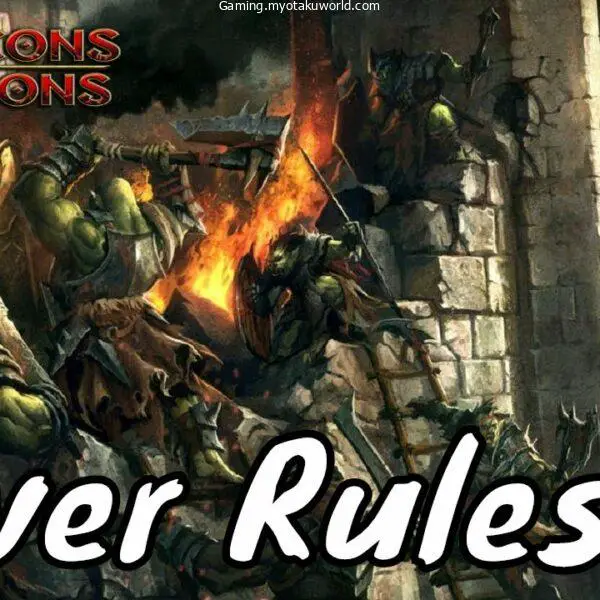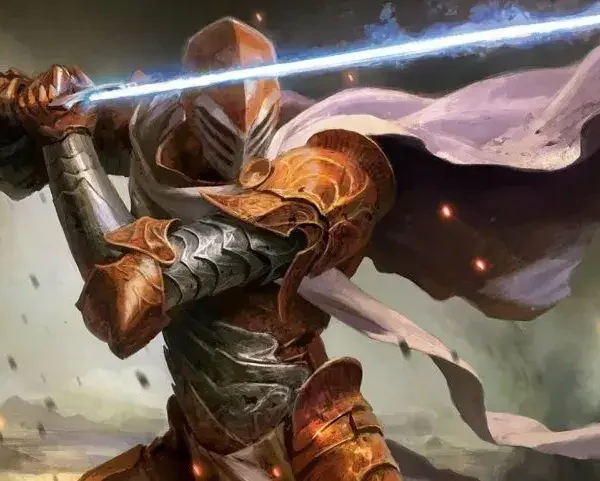There are many ways you can make your enemy’s HP drop. If you’re not a spellcaster, weapons are the best way to hit your enemies.
It’s like choosing a weapon from a candy shop; you can have many, but not all. Do you want to choose the heavy 1d12 slashing-damage-dealing great axe or not?
Or, should you go with the 1d6 piercing damages-dealing shortsword To find the answers to your questions, read our Rapier 5e guide.
There are many things to take into consideration when choosing a weapon. The Strength modifier is used by most weapons to increase your attack roll and damage bonus.
This is a great benefit to buff characters such as barbarians. What would you do if your character is a Rogue who is more skilled in dexterity and strength?
The Rapier is for you if you are proficient with martial weapons, have an aptitude for agility, and prefer to use one hand instead of both.
This weapon is unique because it is the only one in the Weapons Table that can be used as a martial melee class weapon and has only the finesse property.
Do you think the rapier is the right weapon for you? Find out if the rapier is right for you.
What’s a Rapier?

The rapier is a melee weapon for martial combat that deals 1d8 piercing damages, costs 25 GP, and weighs 2 lbs. It also has the finesse property.
To use it properly and effectively, it would be a martial weapon. You cannot use your proficiency bonus to increase your attack roll if you don’t have proficiency with the weapon and you use it against a foe.
A rapier appears to be a slim, balanced sword with two sharp edges and a sharp edge. The rapier is used primarily to thrust and stab people, hence its piercing damage.
Because of its shape, it is quick and incisive. The protective hilt can be found at the end of the pointy, sharp blade.
It is unique because it has one property that makes it stand out from the rest: the finesse property.
Finesse
Roll a d20 against your opponent’s armor or AC to determine whether your attack hits during combat. This is known as the attack roll.
If you are proficient in your weapon, you can also add the appropriate ability modifier to this attack roll. You can also add the ability modifier to your attack roll if it lands.
The strength modifier is usually the ability modifier that most weapons use. You can also add an ability modifier to the Strength modifier.
Here is where finesse comes into play. You can add your dexterity modifier instead. This is particularly useful for characters who wish to use weapons, but have more invested in their strength score than their dexterity score.
Let’s assume your character is a level one rogue with a sword. They have a strong modifier (-1) and a dexterity moderator (+2).
They attack an opponent using a 15 AC rapier and roll an 11. Will it strike? First, rogues have rapier proficiency.
They add their proficiency bonus +2 to their attack roll, making it 13. The ability modifier is next.
Rapiers also have the finesse ability, so they can add the dexterity modifier instead of the Strength modifier.
They would receive an attack roll of 15, making the attack successful. The rapier would not be able to use the property and it would result in a 12 because you would have to apply the strength modifier of 1.
What classes can use a Rapier?
Rapiers are considered to be martial weapons so proficiency is not common in all classes. Although anyone can use a Rapier, not all are proficient.
You cannot increase your proficiency bonus on your attack rolls if you are not proficient in using a weapon. Although this may sound small, it is because you have a +2 at level 1.
This number will increase as you go up in level.
Most magic-based classes can’t use the weapon. Only six classes can use the rapier, and they are:
- Barbarian (as an armed weapon)
- Bard
- Fighter (as an armed weapon).
- Paladin (as an armed weapon)
- Ranger (as an armed weapon)
- Rogue
Except for the Bard, most of these classes are more interested in weapon fighting than magical spells. The Ranger and Paladin gain spellcasting at level 2.
However, it is possible to argue that many of these spells are more focused on supporting the party rather than doing excessive damage.
The Fighter and Rogue have subclasses that allow them to gain spellcasting. These are the Eldritch Knight and Arcane Trickster respectively.
This is at level three. Characters with these classes will be accustomed to using weapons.
Which classes begin with a Rapier?

The weapon can be used by all classes who are proficient in the rapier, except one. Only the Ranger class is exempted from this rule.
They can choose between two melee weapons or two shortswords. Classes usually have several options when choosing a starting weapon.
A lot of these classes have a rapier available as an option for choosing the “martial weapon”.
Here are the remaining five classes that can be started with a Rapier, along with the options available to them.
- Barbarian (a great axe or another martial melee weapon).
- Bard is a rapier, a longsword, or any other simple weapon.
- Fighter: A combination of a shield and a martial weapon, or two martial weapons.
- Paladin is a combination of a shield and a weapon; or, two weapons.
- Rogue is a rapier or a shortsword.
Are 5e rapiers magical?

It is not the norm. Although Rapiers can be used as martial weapons, they are not common items in the D&D world.
These weapons can be used by skilled fighters, but they are not available from everyday blacksmiths.
However, many rappers have magic in them. Here’s a list with information about their rarity as well as where they came from.
The list includes information on how to use these items.
The “A” column of the table indicates that it “needs to be tuned”. If the answer is yes, then it would require attunement. If it is a no, then the item would need attunement.
| Item Title | Rarity | A. | Source |
| +1 Rapier | Uncommon | No | Dungeon Master’s Guide, page 213 |
| +2 Rapier | Rare | No | Dungeon Master’s Guide, page 213 |
| +3 Rapier | Very rare | No | Dungeon Master’s Guide, page 213 |
| Acheron Blade Rapier | Rare | Yes | Page 265 of Explorer’s Guide to Wildemount |
| Corpse Slayer Rapier | Rare | Yes | Page 266 of Explorer’s Guide to Wildemount |
| Dancing Rapier | Very Rare | Yes | Dungeon Master’s Guide, page 161 |
| Defender Rapier | Legendary | Yes | Dungeon Master’s Guide, page 164 |
| Dragon Slayer Rapier | Rare | No | Dungeon Master’s Guide, page 166 |
| Drow +1 Rapier | Unknown | No | Monster Manual, page 126 |
| Flame Tongue Rapier | Rare | Yes | Dungeon Master’s Guide, page 170 |
| Frost Brand Rapier | Very Rare | Yes | Dungeon Master’s Guide, page 171 |
| Giant Slayer Rapier | Rare | No | Dungeon Master’s Guide, page 172 |
| Hellfire Rapier | Uncommon | No | Baldur’s Gate, Descent Into Avernus page 223 |
| Holy Avenger Rapier | Legendary | Yes | Dungeon Master’s Guide, page 174 |
| Luck Blade Rapier | Legendary | Yes | Dungeon Master’s Guide, page 179 |
| Mind Blade Rapier | Rare | Yes | Volo’s Guide to Monsters page 181 |
| Moon-Touched Rapier | Common | No | Xanathar’s Handbook to Everything, page 138 |
| Nine Lives Stealer Rapier | Very Rare | Yes | Volo’s Guide to Monsters page 183 |
| Rapier Armblade | Common | Yes | Eberron: Rising From the Last War, page 276 |
| Rapier of Certain Death | Rare | No | Page 270 of the Explorer’s Guide to Wildemount |
| Rapier of Life Stealing | Rare | Yes | Dungeon Master’s Guide, page 206 |
| Rapier of Vengeance | Uncommon | Yes | Dungeon Master’s Guide, page 206 |
| Rapier of Warning | Uncommon | Yes | Dungeon Master’s Guide, page 213 |
| Rapier of Wounding | Rare | Yes | Dungeon Master’s Guide, page 207 |
| Vicious +1 Rapier | Unknown | No | Acquisitions Incorporated page 149 |
| Vicious Rapier | Rare | No | Dungeon Master’s Guide, page 209 |
Is the Rapier good?

If you are:
- You are proficient in the rapier
- Your strength modifier should have a lower dexterity modifier than your strength modifier.
- Only one hand is required to use the rapier
Yes, the rapier does have higher damage (1d8 perforating damage) than the other melee weapons with finesse properties, such as the shortsword (1d6 damage), Scimitar (1d6 damage), and whip (1d4 damage).
The rapier, however, does not possess the light property, as opposed to the scimitar and the shortsword.
You can use another light weapon to perform a second attack. This is not possible with the rapier. A better alternative is to have a shield in your other hand. You can deal 1d8 piercing and two additional AC damage, making it more difficult to hit.
There is an alternative way to dual-wield Rapiers. This is the Dual Wielder feat, which can be found in the Player’s Handbook on page 165. You can:
- If you use both hands, get a +1 on your AC
- You can perform a second attack using another weapon from your other hand as a bonus action, even if they do not possess the light property
- Two one-handed weapons can be drawn or stowed instead of one
If you want to create a character that can use two weapons simultaneously but finds the light weapons too weak, this is the right feat.
Although the whip does not do as much damage, it is superior in terms of reach. You can reach further with it by five feet.
It comes down to what you value most: more damage or greater reach. The distance between you, your enemies, and them is usually not something to worry about.
You can easily walk at their speed. The rapier is a better option.
The rapier deals 1d8 piercing damages. This weapon deals an average of 4 to 5 damage. You can increase the damage by adding the appropriate ability modifier.
You can use your dexterity modifier to give the rapier the finesse property.

Rapier 5e Guide: FAQs
How severe is the damage done by the rapier?
The Rapier deals 1d8 piercing damages.
How much does a rapier cost?
The rapier is usually 25 GP, according to the Player’s Handbook.
How far can a rapier go?
Because it doesn’t have the reach property, the rapier would be able to reach 5 feet next to the user, much like other melee weapons.
Can you double-wield two Rapiers?
No, normally. The light property is not available to rapiers. You can, however, use the Dual Wielder feat on page 165 to allow you to dual-wield your rapiers.
Can you wield both a rapier or a shield?
Yes, you can. Rapiers can be used one-handed so that you can hold a shield in your other hand. This will give you an extra +2 to your AC.
Which one is better?
It depends on what you are doing. The rapier does more damage (1d8 perforating damage) than the shortsword (1d6 perforating damage).The light property of the shortsword is different from that of the rapier. The rapier can’t do dual-weapon fighting, so you can use two shortswords to fight with. Are you looking to dual-wield your weapon? A shorter sword is better. Are you looking for a weapon that does more damage? Then rapier. If you intend to carry a shield, the rapier is better.
Which is better?
The same thing as the comparison between rapier and shortsword, since the properties of the scimitar are similar to those of the former.The scimitar deals with slashing, while the rapier or shortsword deals with piercing. Although this is not a common occurrence in battle, some monsters are immune to or resistant to piercing and some to slashing damages. It all depends on the type of enemy you are facing.
Which one is better?
Both the rapier (1d8 perforating damage) and longsword (1d8 cutting damage) do the same amount of damage when used with one hand. The versatility property of the longsword means you can use it with both hands to increase its damage (1d10 for slashing). The longsword doesn’t have the finesse property so you can only increase your strength modifier. It is better to keep the rapier if your dexterity modifier exceeds your strength modifier.









